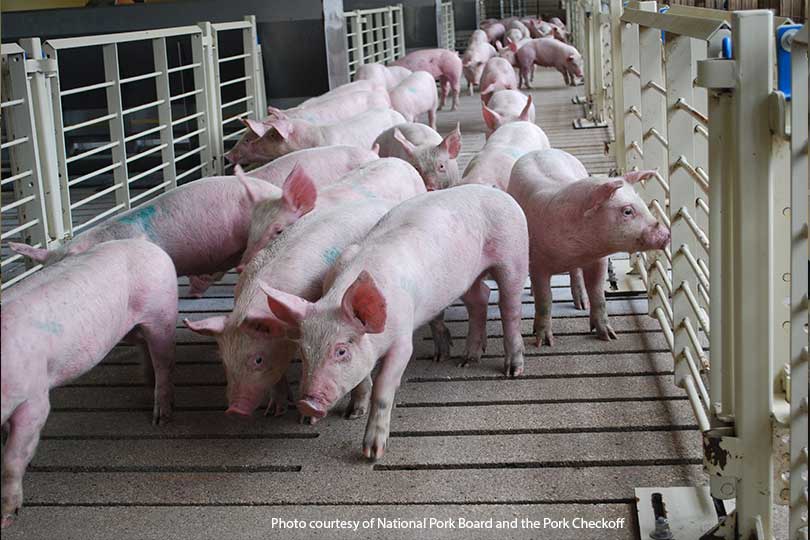By Jennifer Dorsett
Field Editor
Despite the COVID-19 pandemic, the U.S. Meat Export Federation (USMEF) said the U.S. posted strong pork and beef export numbers in March.
“March export results were very solid, especially given the COVID-19-related headwinds facing customers in many international markets at that time,” USMEF President and CEO Dan Halstrom said. “Stay-at-home orders created enormous challenges for many countries’ foodservice sectors, several key currencies slumped against the U.S. dollar and logistical obstacles surfaced in some key markets—yet demand for U.S. red meat proved very resilient.”
Pork
U.S. pork exports set a new record at nearly 300,000 metric tons, according to a USMEF analysis. That’s a 38 percent increase over last year and exceeds the previous record set in December 2019.
China and Hong Kong were the largest buyers, but Japan, Mexico and Canada also purchased significantly more U.S. pork.
According to USMEF, African swine fever is still playing a large role in Chinese demand for pork imports, not only from the U.S. but other countries, as well. U.S. exports to China in March were nearly triple last year’s volume, and total first quarter exports were up 321 percent in value to $724.5 million.
Beef
Exports of U.S. beef fared well in Japan, where a new trade agreement between the two countries eliminated or reduced nearly 90 percent of U.S. food and agricultural product tariffs.
March exports of U.S beef to Japan increased 16 percent over a year ago, and first quarter exports increased 12 percent overall, valued at $523.4 million.
Chinese purchases of U.S. beef increased slightly in the first quarter, up 12 percent, but USMEF noted exports “are poised for accelerated growth” under the phase one trade agreement between the U.S. and China.
Red meat trade provisions of the agreement between the nations went into effect March 20. Second quarter numbers will tell more about the impact on U.S. beef exports, USMEF said.
Korea is also ramping up U.S. beef purchases. In March, exports climbed 10 percent over one year ago, and first quarter exports were up 14 percent. USMEF said in its report Korea has further eased COVID-19-related restrictions, and early May holidays in the nation showed a strong recover in foodservice sales.
Another Asian nation showing strong growth for the U.S. beef sector is Taiwan. March exports to Taiwan increased 11 percent from a year ago, increasing in value to $49.5 million. First quarter exports were up 17 percent and valued at $137.5 million.
North American purchases of U.S. beef also increased. Beef exports to Mexico posted modest gains, while Canadian imports of U.S. beef were up 22 percent over last year. Beef variety meat exports led growth in Canada at an increase of 67 percent in value and 48 percent in volume over last year.
Lamb
For the first time in 2020, March exports of U.S. lamb trended up to $2.4 million, an increase of 13 percent over the same time last year. Mexico was the leading driver, according to USMEF, with muscle cut exports increasing 159 percent in volume.
Lamb muscle cuts also showed first quarter growth in Egypt and Japan.
USMEF cautioned meat exports may drop in April and May, reflecting disruptions in the supply chain as U.S. meat processing facilities slow down or close due to COVID-19 outbreaks.
“These are truly unprecedented circumstances, creating an uncertain global business climate,” Halstrom said. “The U.S. meat industry has spent decades developing a loyal and well-informed customer base throughout the world, which has embraced the quality and value delivered by U.S. red meat. Their commitment to U.S. products during this crisis is much-appreciated.”

